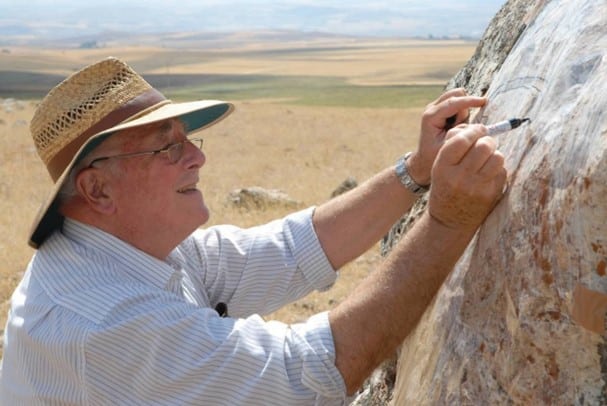
Nimrud, NW Palace. Courtesy of the Oxford Archaeology Image Database
The Nimrud Digitisation Project
British Institute for the Study of Iraq (BISI) can announce the start of an important initiative to digitise and release online documents relating to the excavation of Nimrud.
By Ali Khadr
The British Institute for the Study of Iraq to support the conservation of ancient Nimrud
Thanks to generous support from an anonymous donor, today the British Institute for the Study of Iraq (BISI) can announce the start of an important initiative to digitise and release online documents relating to the excavation of Nimrud. This will be an important contribution to the international effort led by the Iraqi State Board of Antiquities and Heritage to manage and conserve this globally important cultural site.
The site of Nimrud represents the remains of the ancient city of Kalhu (Biblical Calah). For almost two centuries, from the early 9th to the late 8th century BC, Kalhu was the centre of the mighty Assyrian empire and contained some of the most magnificent buildings from antiquity.
Located about 30 kilometres south of Mosul in northern Iraq, Nimrud was under the control of ISIS until November 2016. During its occupation, many important historical monuments and artefacts were deliberately damaged or destroyed, including rare examples of painted Assyrian relief sculptures.
Nimrud was excavated by the British School of Archaeology in Iraq, now the British Institute for the Study of Iraq, between 1949 and 1963, and is arguably one of the most important British archaeological ventures undertaken in the Middle East. The excavation was led by Sir Max Mallowan; his wife, Agatha Christie, was also part of the excavation team and wrote several of her novels while at Nimrud.
The detailed excavation notebooks and plans were stored at the British Museum and, with their agreement and support, these are now being professionally digitised by Wessex Archaeology, one of the UK’s leading heritage practices: http://www.wessexarch.co.uk. The records will then be made available online, under an Open Access License.
Dr Paul Collins, Chair of the British Institute for the Study of Iraq, commented: “Nimrud is one of the most important sites in the Ancient Near East. I am hugely grateful to an anonymous donor for ensuring that BISI will be able to make these important records available in supporting the efforts to document and preserve Nimrud for future generations.”
For further information please contact:
Ali Khadr
[email protected] / +44 (0)20 7969 5274
Latest News
May 3, 2022
Dr Abdulameer al-Hamdani
The Trustees of the British Institute for the Study of Iraq were deeply saddened to hear of the death of Dr Abdulameer al-Hamdani on Friday April 29th in Nasiriyah, Iraq.


